Rs. 5,000 - Rs. 2 crore
To find the nearest gold loan branch,
Enter phone and OTP | Check amount you can get | Apply for quick funds
Growth and importance of the gold loan market in India
The gold loan market in India has seen remarkable growth in recent years, becoming one of the most preferred sources of quick and secured financing. A gold loan allows you to pledge your gold jewellery as collateral to borrow funds. These loans are popular due to their fast processing, minimal documentation, and relatively lower interest rates compared to unsecured loans. The gold loan market size in India is expanding steadily as more people recognise the value of their gold assets in times of financial need.
Gold loans are ideal for emergencies, medical expenses, education costs, or personal requirements. Bajaj Finance offers gold loan from Rs. 5,000 to Rs. 2 crore with competitive interest rate and easy renewal and top-up facility. This loan comes with convenient gold loan repayment options, offering options such as monthly, bi-monthly, quarterly, half-yearly, or annual interest payments. With attractive loan-to-value ratios, you can maximise the value of your pledged gold. As the gold loan market in India continues to grow, it serves as a reliable and inclusive financial option for people across both urban and rural areas.
Gold loan market trends in India and growth
The gold loan market in India has witnessed remarkable growth over the past decade. Traditionally, gold loans were a niche financial product, primarily sought by rural households. However, with the advent of organised financial institutions, the market has evolved significantly. Banks and non-banking financial companies (NBFCs) have tapped into this sector, offering attractive gold loan interest rates and streamlined loan processes. Additionally, the rise in gold prices has increased the loan-to-value (LTV) ratio, further fuelling demand. Digital platforms and mobile applications have also revolutionised the market, making it easier for borrowers to access loans. In recent years, the market has grown due to rising economic uncertainties, a surge in gold ownership, and the increased liquidity offered by such loans. With more players entering the market and innovations in digital lending, the gold loan market in India is poised for continued growth in the coming years.
Factors driving the gold loan market in India
The rapid growth of the gold loan market in India can be attributed to several key factors that have made gold loans increasingly popular and accessible. Here are a few key factors contributing to the growth of the gold loan market in India:
- Cultural significance of gold: Gold is considered a valuable asset in Indian households, making it a reliable option for securing loans during financial crises or emergencies.
- Rising gold prices: The increasing price of gold has allowed borrowers to access larger loans, making it easier to pledge gold for greater financial assistance.
- Growth of the informal economy: Many individuals in India, especially from rural areas, prefer loans without complex documentation, which gold loans cater to.
- Financial awareness: With growing awareness about financial services, rural populations have increasingly turned to gold loans as a viable financing option.
- Attractive loan features: Financial institutions offer flexible repayment options, competitive interest rates, and easy terms to make gold loans more accessible.
- Digitisation of loan processes: Online platforms and digitisation have made loan disbursal quicker and more convenient, enhancing accessibility across India.
With these driving factors in place, the gold loan market size in India is set to continue expanding, offering greater financial flexibility and accessibility for borrowers nationwide.
Pro-tip: Do not let your jewellery sit idle—tap into its value with a gold loan that suits your needs. Apply for a gold loan today!
Gold rates year-wise: A complete historical chart
India's gold prices have experienced significant fluctuations over the years, shaped by global economic conditions, domestic demand, and currency exchange rates. From modest prices in the early 2000s to sharp surges in response to economic crises and inflation, the price of gold has been volatile but consistently on the rise. The highest spike in recent years came in 2020, when the COVID-19 pandemic pushed gold prices to Rs. 56,000 per 10 grams due to economic uncertainty. Below is a detailed year-wise breakdown of key price trends:
| Year | Gold Price per 10 Grams (Rs.) | Key Influencing Factors |
| 2000 | 4,400 | Economic conditions, low demand |
| 2010 | 18,500 | Global financial crisis, safe-haven demand |
| 2013 | 30,000 | Festive & wedding demand, global factors |
| 2020 | 56,000 | COVID-19 pandemic, economic uncertainty |
This table highlights the fluctuations in gold prices and provides a clear picture of how both global and local factors have contributed to shaping gold's value over time.
Indian gold loan market size current and future
The Indian gold loan market has grown exponentially in recent years, with estimates suggesting a current market size exceeding ₹4 lakh crore. Banks, NBFCs, and fintech players dominate this space, offering short-term loans with gold as collateral. The increasing price of gold has led to a surge in the loan-to-value ratio, making gold loans an attractive option for borrowers. As more people look for quick liquidity without the hassle of extensive paperwork, the demand for gold loans continues to grow. The market is expected to expand at a compound annual growth rate (CAGR) of 15-18% in the coming years, driven by digital lending platforms, enhanced customer awareness, and innovative loan products. The future of the gold loan market in India looks promising, with financial institutions focusing on rural penetration and fintech integration.
How the gold loan market in India has evolved?
Over the years, the Indian gold loan market has evolved from being an unorganised sector to a well-regulated and digitised financial service. Traditionally, people relied on local moneylenders for loans against their gold, often facing high interest rates and unfavourable terms. With the rise in gold price and the entry of banks and NBFCs, the gold loan market has become more formal and customer-friendly. Financial institutions now offer transparent pricing, standardised interest rates, and easy documentation processes, making gold loans accessible to a broader population. Digital advancements have also played a significant role in this transformation, with mobile apps and online platforms enabling instant loan approvals and disbursals. This shift has increased trust among borrowers and expanded the market's reach.
The expanding gold loan market in India: opportunities and challenges
The expanding gold loan market in India presents numerous opportunities, particularly for financial institutions seeking to tap into the vast gold reserves held by Indian households. With gold prices on the rise and digital platforms making loan access easier, this market offers immense growth potential. The low default rates associated with gold loans make them an attractive proposition for lenders. However, challenges remain, including regulatory hurdles, fluctuating gold prices, and competition from other loan products. Moreover, rural penetration still requires significant effort, as many areas lack access to formal financial services. To seize these opportunities, lenders must focus on innovation, financial literacy, and customer-centric solutions while addressing the challenges of market saturation and fluctuating economic conditions.
Not sure if you qualify? Find out in moments— check yourgold loan eligibility and plan your next move confidently.
Regional insights into the gold loan market in India
- South India: Dominates the gold loan market, with a significant share due to cultural affinity for gold.
- North India: Experiencing growth, with more banks and NBFCs expanding gold loan services in rural areas.
- West India: Increasing demand driven by urban centres like Mumbai and Ahmedabad, where customers seek quick liquidity.
- East India: Slower growth, but potential exists due to the rising financial inclusion efforts.
- Rural vs Urban: Rural regions hold higher potential, with increased financial awareness and gold ownership; urban areas show growing demand for organised gold loan products.
The impact of gold prices on the gold loan market in India
- Loan-to-value ratio: Fluctuating gold prices directly impact the loan amount a borrower can secure.
- Demand: Higher gold prices tend to increase demand for gold loans as borrowers can access larger loans with the same collateral.
- Repayment: Volatile prices can affect borrowers’ ability to repay loans, leading to higher defaults during price drops.
- Interest rates: Gold price trends can influence the interest rates offered by lenders, with higher prices generally leading to more favourable rates.
- Market growth: Rising gold prices stimulate market growth, attracting more players and customers seeking to leverage their gold assets.
How big is the gold loan market in India?
The gold loan market in India is one of the largest in the world, estimated at over Rs. 4 lakh crore. This market has grown due to various factors and is an essential part of the lending landscape.
- Market size: Over Rs. 4 lakh crore, making it one of the largest globally.
- Market share: A significant portion of lending portfolios for banks and NBFCs.
- Cultural influence: India's deep cultural connection with gold drives demand for loans.
- Ease of access: Gold loans are easy to obtain with minimal documentation, attracting borrowers.
- Growth potential: Expected to grow at a double-digit CAGR, fuelled by rising gold prices.
- Rural expansion: Lenders are targeting rural areas where gold ownership is higher.
Analysing the Indian gold loan market size over the years
The gold loan market size in India has evolved considerably over the years, shaped by changing economic conditions and market dynamics.
- Early 2000s: The market was mostly unorganised, with local lenders dominating the sector.
- 2010s: The rise of NBFCs and growing gold market trends led to rapid market growth.
- COVID-19 era: Gold loans surged in popularity as a quick liquidity source during the pandemic.
- Current size: The market now stands at Rs. 4 lakh crore, with participation from banks, NBFCs, and fintech companies.
- Future projections: The gold loan market is expected to grow at a CAGR of 15-18%, driven by higher gold prices, digital platforms, and increased rural penetration.
Quick fix: It takes just 2 steps to check your eligibility for a Bajaj Finserv Gold Loan. Enter your mobile number now.
Gold Loan fees and charges
When you take a gold loan, the interest rate decides how much you will end up paying over the borrowed amount. A lower rate keeps your repayments light, while a higher one increases the total cost. With Bajaj Finserv Gold Loan, you get competitive gold loan interest rate that make borrowing more affordable. It is always a good idea to check the applicable rate before applying, so you know exactly what to expect. This way, you can plan your repayments better and make the most of the value locked in your gold jewellery.
Gold loan eligibility and documentation
Checking if you qualify for a gold loan is quite straightforward. With us, you simply need to be an Indian citizen aged between 21 to 70 years. Since your jewellery itself acts as the collateral, there is no heavy dependency on your credit score, making it easier to get approved. The value of your gold determines the loan amount you are eligible for, based on the current market rate and loan-to-value ratio. This makes eligibility simple, transparent, and accessible for almost everyone who owns gold ornaments.
Curious about your loan eligibility? Enter your mobile number to see how much you can get for your gold.
Gold loan application process
Applying for a gold loan is quick and hassle-free. With Bajaj Finance, you can either apply online through the website or Bajaj Finserv App, or you can visit the nearest branch for in-person assistance. All you need are your gold ornaments and basic KYC documents. Once your gold is evaluated, the loan is processed, and the funds are credited directly to your account. The process is designed to be simple, so you do not waste time on lengthy paperwork and can access your money as soon as you need it.
Do not let your jewellery sit idle—tap into its value with a gold loan that suits your needs. Apply for a gold loan today!
Related Articles
Disclaimer
Bajaj Finance Limited has the sole and absolute discretion, without assigning any reason to accept or reject any application. Terms and conditions apply*.









 Personal Loan
Personal Loan Check Eligibility
Check Eligibility Salaried Personal Loan
Salaried Personal Loan EMI Calculator
EMI Calculator Account Aggregator
Account Aggregator Credit Pulse Report
Credit Pulse Report
 Deals starting @99
Deals starting @99 Festive deals
Festive deals Min. 50% off
Min. 50% off
 Wallet to Bank
Wallet to Bank
 Easy EMI Loan
Easy EMI Loan Savings Offer
Savings Offer Smartphones
Smartphones Led TVs
Led TVs Washing Machines
Washing Machines Laptops
Laptops Refrigerators
Refrigerators Air Conditioner
Air Conditioner Air Coolers
Air Coolers
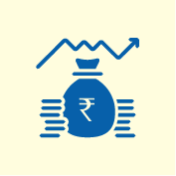 Loan Against Shares
Loan Against Shares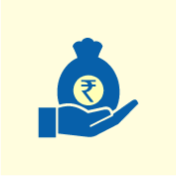 Loan Against Mutual Funds
Loan Against Mutual Funds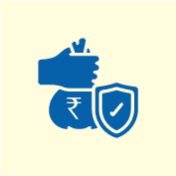 Loan Against Insurance Policy
Loan Against Insurance Policy ESOP Financing
ESOP Financing Easy EMI Loan
Easy EMI Loan Two-wheeler Loan
Two-wheeler Loan Loan for Lawyer
Loan for Lawyer Industrial Equipment Finance
Industrial Equipment Finance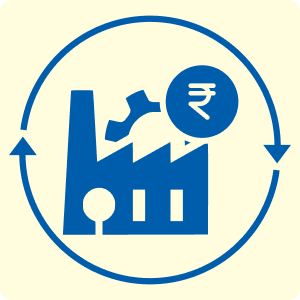 Industrial Equipment Balance Transfer
Industrial Equipment Balance Transfer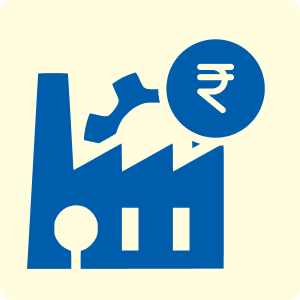 Industrial Equipment Refinance
Industrial Equipment Refinance Personal Loan Branch Locator
Personal Loan Branch Locator Used Tractor Loan
Used Tractor Loan Loan Against Tractor
Loan Against Tractor Tractor Loan Balance Transfer
Tractor Loan Balance Transfer
 Two-wheeler Loan
Two-wheeler Loan Bike
Bike Scooter
Scooter Electric Vehicle
Electric Vehicle Best Sellers
Best Sellers Popular Brands
Popular Brands

 Trading Account
Trading Account Open Demat Account
Open Demat Account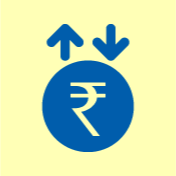 Margin Trading Financing
Margin Trading Financing Share Market
Share Market Invest in IPO
Invest in IPO All stocks
All stocks Top gainers
Top gainers Top losers
Top losers 52 week high
52 week high 52 week low
52 week low Loan against shares
Loan against shares
 Home Loan
Home Loan Transfer your existing Home loan
Transfer your existing Home loan Loan against Property
Loan against Property Home Loan for Salaried
Home Loan for Salaried Home loan for self employed
Home loan for self employed Home Loan EMI Calculator
Home Loan EMI Calculator Home Loan eligibility calculator
Home Loan eligibility calculator Home Loan balance transfer
Home Loan balance transfer
 Term Life Insurance
Term Life Insurance ULIP Plan
ULIP Plan Savings Plan
Savings Plan Family Insurance
Family Insurance Senior Citizen Health Insurance
Senior Citizen Health Insurance Critical Illness Insurance
Critical Illness Insurance Child Health Insurance
Child Health Insurance Pregnancy and Maternity Health Insurance
Pregnancy and Maternity Health Insurance Individual Health Insurance
Individual Health Insurance Low Income Health Insurance
Low Income Health Insurance Student Health Insurance
Student Health Insurance Group Health Insurance
Group Health Insurance Retirement Plans
Retirement Plans Child Plans
Child Plans Investment Plans
Investment Plans
 Business Loan
Business Loan Secured Business Loan
Secured Business Loan Loan against property
Loan against property Loans against property balance transfer
Loans against property balance transfer Loan against shares
Loan against shares Home Loan
Home Loan Loans against mutual funds
Loans against mutual funds Loan against bonds
Loan against bonds Loan against insurance policy
Loan against insurance policy
 Apply for Gold Loan
Apply for Gold Loan Transfer your Gold Loan with Us
Transfer your Gold Loan with Us Gold Loan Branch Locator
Gold Loan Branch Locator
 ULIP Plan
ULIP Plan Savings Plan
Savings Plan Retirement Plans
Retirement Plans Child Plans
Child Plans Free Demat Account
Free Demat Account Invest in Stocks
Invest in Stocks Invest in IPO
Invest in IPO Margin Trading Facility
Margin Trading Facility Fixed Deposit Branch Locator
Fixed Deposit Branch Locator
 Check your Credit Score
Check your Credit Score
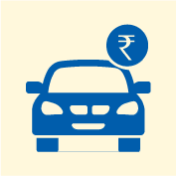 New Car Loan
New Car Loan Used Car Loan
Used Car Loan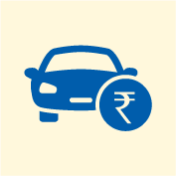 Loan Against Car
Loan Against Car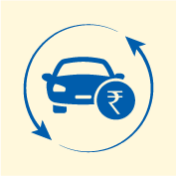 Car Loan Balance Transfer and Top-up
Car Loan Balance Transfer and Top-up
 Get Bajaj Prime
Get Bajaj Prime
 Mobiles on EMI
Mobiles on EMI Electronics on EMI Offer
Electronics on EMI Offer  Iphone on EMI
Iphone on EMI LED TV on EMI
LED TV on EMI Refrigerator on EMI
Refrigerator on EMI Laptop on EMI
Laptop on EMI Kitchen appliances on EMI
Kitchen appliances on EMI Washing machines
Washing machines
 Personal Loan EMI Calculator
Personal Loan EMI Calculator Personal Loan Eligibility Calculator
Personal Loan Eligibility Calculator Home Loan EMI Calculator
Home Loan EMI Calculator Home Loan Eligibility Calculator
Home Loan Eligibility Calculator Good & Service Tax (GST) Calculator
Good & Service Tax (GST) Calculator Flexi Day Wise Interest Calculator
Flexi Day Wise Interest Calculator Flexi Transaction Calculator
Flexi Transaction Calculator Secured Business Loan Eligibility Calculator
Secured Business Loan Eligibility Calculator Fixed Deposits Interest Calculator
Fixed Deposits Interest Calculator Two wheeler Loan EMI Calculator
Two wheeler Loan EMI Calculator New Car Loan EMI Calculator
New Car Loan EMI Calculator Used Car Loan EMI Calculator
Used Car Loan EMI Calculator All Calculator
All Calculator Used Tractor Loan EMI Calculator
Used Tractor Loan EMI Calculator
 Hot Deals
Hot Deals Clearance Sale
Clearance Sale Kitchen Appliances
Kitchen Appliances Tyres
Tyres Camera & Accessories
Camera & Accessories Mattresses
Mattresses Furniture
Furniture Watches
Watches Music & Audio
Music & Audio Cycles
Cycles Mixer & Grinder
Mixer & Grinder Luggage & Travel
Luggage & Travel Fitness Equipment
Fitness Equipment Fans
Fans
 Personal Loan for Doctors
Personal Loan for Doctors Business loan for Doctors
Business loan for Doctors Medical Equipment Finance
Medical Equipment Finance Secured Business Loan
Secured Business Loan Loan against property
Loan against property Secured Business Loan Balance Transfer
Secured Business Loan Balance Transfer Loan against share
Loan against share Gold Loan
Gold Loan Home Loan
Home Loan
 Engagement Zone
Engagement Zone Game Zone
Game Zone
 Savings Offer
Savings Offer Easy EMI
Easy EMI Offer World
Offer World 1 EMI OFF
1 EMI OFF New Launches
New Launches Zero Down Payment
Zero Down Payment Clearance Sale
Clearance Sale Bajaj Mall Sale
Bajaj Mall Sale
 Mobiles under ₹20,000
Mobiles under ₹20,000 Mobiles under ₹25,000
Mobiles under ₹25,000 Mobiles under ₹30,000
Mobiles under ₹30,000 Mobiles under ₹35,000
Mobiles under ₹35,000 Mobiles under ₹40,000
Mobiles under ₹40,000 Mobiles under ₹50,000
Mobiles under ₹50,000
 Articles
Articles
 Overdue Payments
Overdue Payments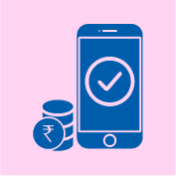 Other Payments
Other Payments
 Document Center
Document Center Bank details & Documents
Bank details & Documents Tax Invoice Certificate
Tax Invoice Certificate
 Do Not Call Service
Do Not Call Service
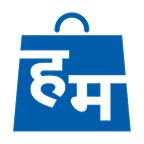 Hamara Mall Orders
Hamara Mall Orders

 Check Loan Offer
Check Loan Offer Mobiles on EMI
Mobiles on EMI Trade directly with your Demat A/c
Trade directly with your Demat A/c ITR
ITR My Garage
My Garage
 Live Videos - Beta
Live Videos - Beta
 Savings Offer
Savings Offer Smartphones
Smartphones LED TVs
LED TVs Washing Machines
Washing Machines Laptops
Laptops Refrigerators
Refrigerators Air Conditioners
Air Conditioners Air Coolers
Air Coolers Water Purifiers
Water Purifiers Tablets
Tablets Kitchen Appliances
Kitchen Appliances Mattresses
Mattresses Furniture
Furniture Music and Audio
Music and Audio Cameras & Accessories
Cameras & Accessories Cycle
Cycle Watches
Watches Tyres
Tyres Luggage & Travel
Luggage & Travel Fitness Equipment
Fitness Equipment Tractor
Tractor Easy EMI Loan
Easy EMI Loan
 vivo Mobiles
vivo Mobiles OPPO Mobiles
OPPO Mobiles Xiaomi Mobiles
Xiaomi Mobiles Sony LED TVs
Sony LED TVs Samsung LED TVs
Samsung LED TVs LG LED TVs
LG LED TVs Haier LED TVs
Haier LED TVs Godrej Refrigerators
Godrej Refrigerators Voltas Washing Machines
Voltas Washing Machines








